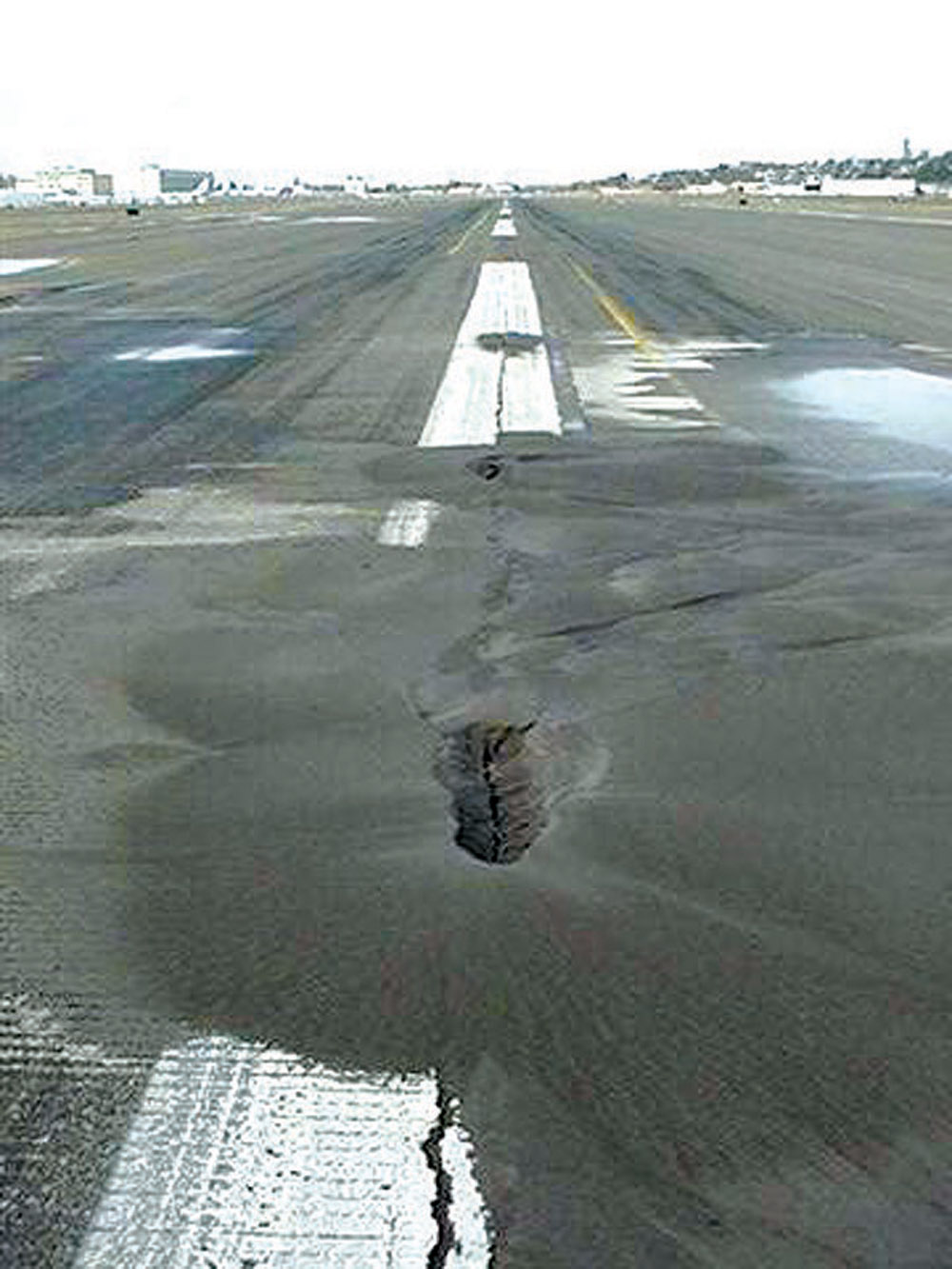By Michael Colmant, KCIA Assistant Airport Director
In 2001, the Seattle region shook with a serious earthquake. Most people think of homes, businesses and roads as being the concern for failure during such an event; most don’t think about airports during such a catastrophe. The earthquake hit King County International Airport (KCIA) hard, and its impacts are still being felt.
Although many think of KCIA as a general aviation airport, it’s much more. Home to over 500-based aircraft, the airport also is a major aviation center for manufacturing. KCIA handles a significant share of the region’s air cargo activity, served by some of the largest carriers in the world, such as UPS and DHL. The airport also serves a wide variety of corporate aviation customers, as well as government organizations.
With more than 300,000 annual operations, KCIA ranks 37th in the country for airports with control towers. Federal Aviation Administration statistics for 2004 indicate the airport is ranked 32nd nationally for air cargo tonnage, as measured in total landed weight.
KCIA is home to The Boeing Company’s commercial delivery center for B-737 aircraft; its flight test department, which is responsible for testing and certification of new aircraft; and its military flight center for AWACs and other military programs. B-737 production and deliveries are forecast to reach 28 aircraft per month by midyear 2006, which is nearly one delivery per day to airlines around the world.
KCIA’s annual impact to the Puget Sound economy is approximately $1.6 billion; however, it serves more than just this region. The airport contributes to the vitality of the aviation industry nationwide, and its 10,000-foot main runway is the key component.
Back on Feb. 28, 2001, at 10:54 Pacific time, the Nisqually Earthquake delivered a magnitude 6.8 punch that had a devastating affect on the airport. The air traffic control tower swayed on its foundation. Airport buildings experienced extensive damage, creating serious safety hazards. However, the most significant damage impacted the airfield.
Those who work at airports never expect to witness water geysers spout and mud flow from cracks in the airfield’s pavement and grassy areas. Parts of Runway 13R/31L literally broke apart, with subsurface liquefaction in numerous areas. The earthquake also destroyed sections of the airfield storm drainage system, creating large sink holes in the safety areas and voids beneath pavement that appeared intact immediately following the event.
Initially, repairs were estimated to take six weeks; however, by working around the clock, the runway pavement and associated systems were repaired in two weeks. The full length of Runway 13R/13L was reopened March 14, 2001. Additional repair work to the taxiway system and ramp facilities, as well as airport buildings, was completed in the subsequent months.
At the time, it was recognized that the pavement repairs were only an immediate, short-term solution. Runway 13R/31L was last overlaid with asphalt concrete in 1985, and a complete rehabilitation was planned for 2005-2006, when the facility was expected to reach the end of its useful 20-year life.
In 2003, the airport began to receive pilot complaints concerning dips and depressions on the runway. Some of the more abrupt grade changes produced complications in The Boeing Company’s testing and certification of its B-777-300 ER.
The runway continues to settle, and the longitudinal profile doesn’t meet the FAA standards. The 2001 earthquake still affects the airport today. The age of the pavement, which continues to deteriorate, contributes further to the problems.
After ongoing discussions with the FAA, KCIA officials received a funding commitment in spring 2005, for 95 percent of the cost to rehabilitate the entire runway. The funding balance will come from airport reserves. The project design was initiated in summer 2005 and is nearing completion. Its elements include the following:
* Resurfacing Runway 13R/13L and connecting taxiway intersections
* Installing a perimeter drainage system
* Replacing runway edge lights and cabling
* Installing runway guard lights at taxiway hold lines
* Pavement grooving
* Runway painting
Project construction is expected to commence this summer, resulting in the temporary closure of the main runway. The airport’s 3,710-foot general aviation runway will remain open, until complete runway closure is necessary near the end of the project. While necessary to complete the project, the full closure will impact KCIA tenants and other users who will be required to make alternate plans during this period.
The airport’s challenge is to develop and execute a plan that provides a quality finished product, while minimizing the impact to tenants. KCIA must also provide predictability of runway availability and offer the highest degree of safety for aircraft operators, contractor personnel and staff.
An aggressive 24-hour construction schedule is being planned, and a number of different phasing scenarios have been developed to shorten the total runway closure period. The scenarios range from closing the entire runway until the work is completed, to a phased closure with displaced thresholds, to a “weekends only” option.
With its unique mix of aircraft manufacturing, air cargo, corporate aviation and other tenant activities, KCIA has a customer base whose interests are both similar and diverse. All require use of the main runway; however, the time and frequency of use varies by user. No single construction-phasing plan meets the requirements of everyone.
As of publication of this article, a final construction plan hasn’t been finalized. The construction and phasing schedule will be published in the next edition of the Pacific Northwest Aviation & Business Journal and will be available on Boeing Field’s website at [http://www.metrokc.gov/airport].













